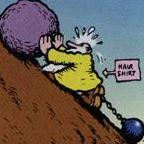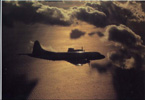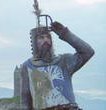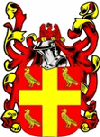ChezDaJez
Posts: 3436
Joined: 11/12/2004
From: Chehalis, WA
Status: offline

|
quote:
The other technology there involves thorim - it is very hard to understand - the term reported by Korea historians is "thorium bomb." This does not make much sense in terms of bombs we know about - but it appears the British also had such a concept - and developed it secretly because they didn't trust the Americans to share the uranium bomb. [They were right- we did refuse to share it - in violation of wartime deals giving us a jump start with British help]. Problem is - the thorium bomb is not a very good military weapon - it might be a good terrorist weapon though. That may explain the hyper secrecy about both Japanese and British projects - both of which allegedly were tested during the war (the British in Australia - this getting back to us because it was on the land of a rancher who was a US citizen - and he made a secret report to a US consol - who had no idea what he was reporting - making him a good source). Since the report was not part of any nuclear project - it never got classified the way other things did - and it gives us information not otherwise available. But officials in US and Australia and Canada all say the British "thorium bomb" existed - so I am no longer sure a Japanese one is as "impossible" as I long believed.
The problem with thorium is that you need a reactor to turn it into fissionable U-233. While thorium is 3 times more abundant on earth than is uranium and does have some attactive features for bomb making (including greater reactivity and smaller critical sphere requirements), it also has some very substantial problems that are very difficult to overcome.
The first is that U-232 is almost always produced inconjunction with U-233 and cannot be separated from it. U-232 emits very powerful gamma rays (thallium-208). This would produce a very serious radiation poisoning risk for anyone working with the material. These gamma rays are twice as powerful as those produced by plutonium and have a much longer half-life. This would also make the concealment of a "thorium" bomb quite difficult as its gamma rays could be easily detected. That alone greatly reduces it risk of being used as a terrorist weapon.
The second is that it is much easier to produce plutonium-239 in the type of natural uranium reactor required to produce U-233 from thorium (but which also allows the greatest concentration of thallium-208). If a country possesses a reactor capable of making enriched uranium (which is the best kind for producing U-233), it is already capable of turning natural uranium into U-235. U-233 can be produced using a cyclotron but the output of usable U-233 is so miniscule that it would take years to produce enough to make one bomb. This is probably why no country, through military or civilian means, has produced enough U-233 to make a viable bomb. There are so many other easier ways to do so.
Nishina, Japan's leading atomic scientist, also grossly under estimated the amount of time required to achieve critical mass by an order of ten. It's doubtful whether such a weapon would have actually been able to detonate with any substantial reaction.
While I have no doubt that Germany and Japan were researching nuclear weapons, it is my opinion that neither, by themselves, were capable of doing so prior to 1950. And of course the war ended well before then. Japan's difficulty in making a bomb wasn't so much a lack of scientific knowledge as it was a lack of infrastructure (reactors) and materials (U-233, U-235) capable of supporting a viable bomb-making program.
BTW, there are some people who insist that Japan actually exploded a thorium bomb off the coast of Korea on 10 Aug 45. Assuming they had the capability, this makes absolutely no sense to me. I would think it would be far more likely that they would have used it against the invading Red Army.
Bottom line is that Japan was years away from developing an atomic bomb of any type.
_____________________________
Ret Navy AWCS (1972-1998)
VP-5, Jacksonville, Fl 1973-78
ASW Ops Center, Rota, Spain 1978-81
VP-40, Mt View, Ca 1981-87
Patrol Wing 10, Mt View, CA 1987-90
ASW Ops Center, Adak, Ak 1990-92
NRD Seattle 1992-96
VP-46, Whidbey Isl, Wa 1996-98
|
 Printable Version
Printable Version















 New Messages
New Messages No New Messages
No New Messages Hot Topic w/ New Messages
Hot Topic w/ New Messages Hot Topic w/o New Messages
Hot Topic w/o New Messages Locked w/ New Messages
Locked w/ New Messages Locked w/o New Messages
Locked w/o New Messages Post New Thread
Post New Thread